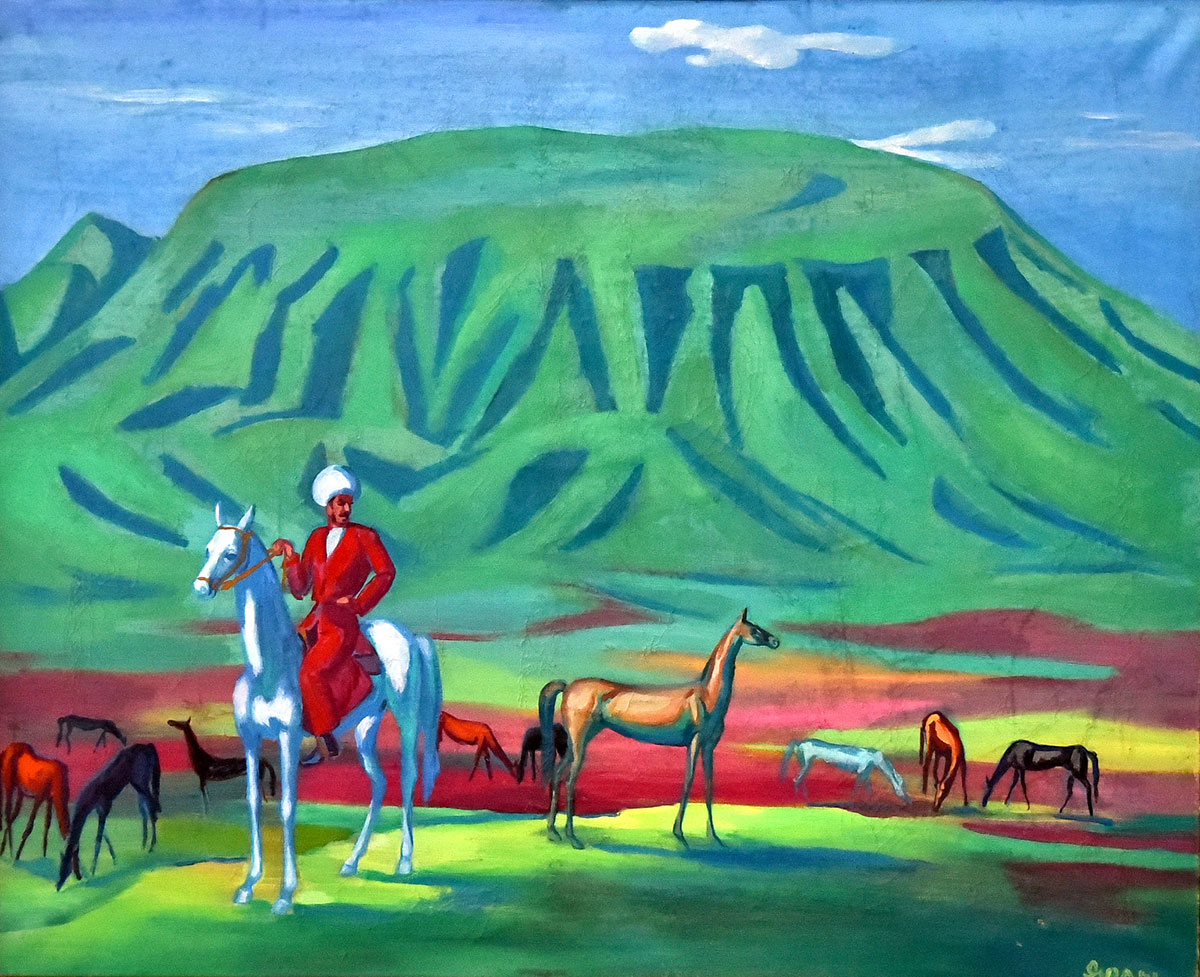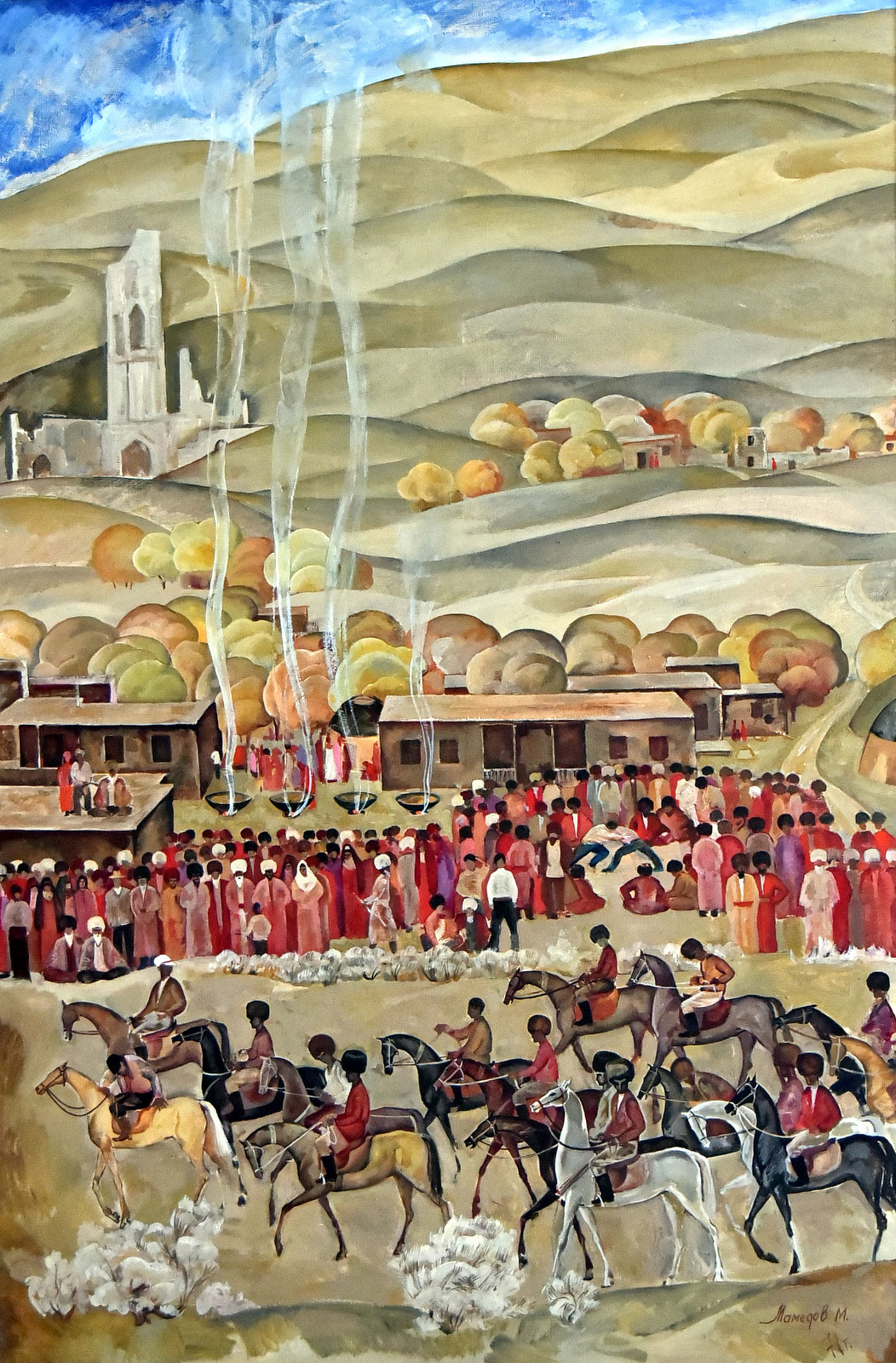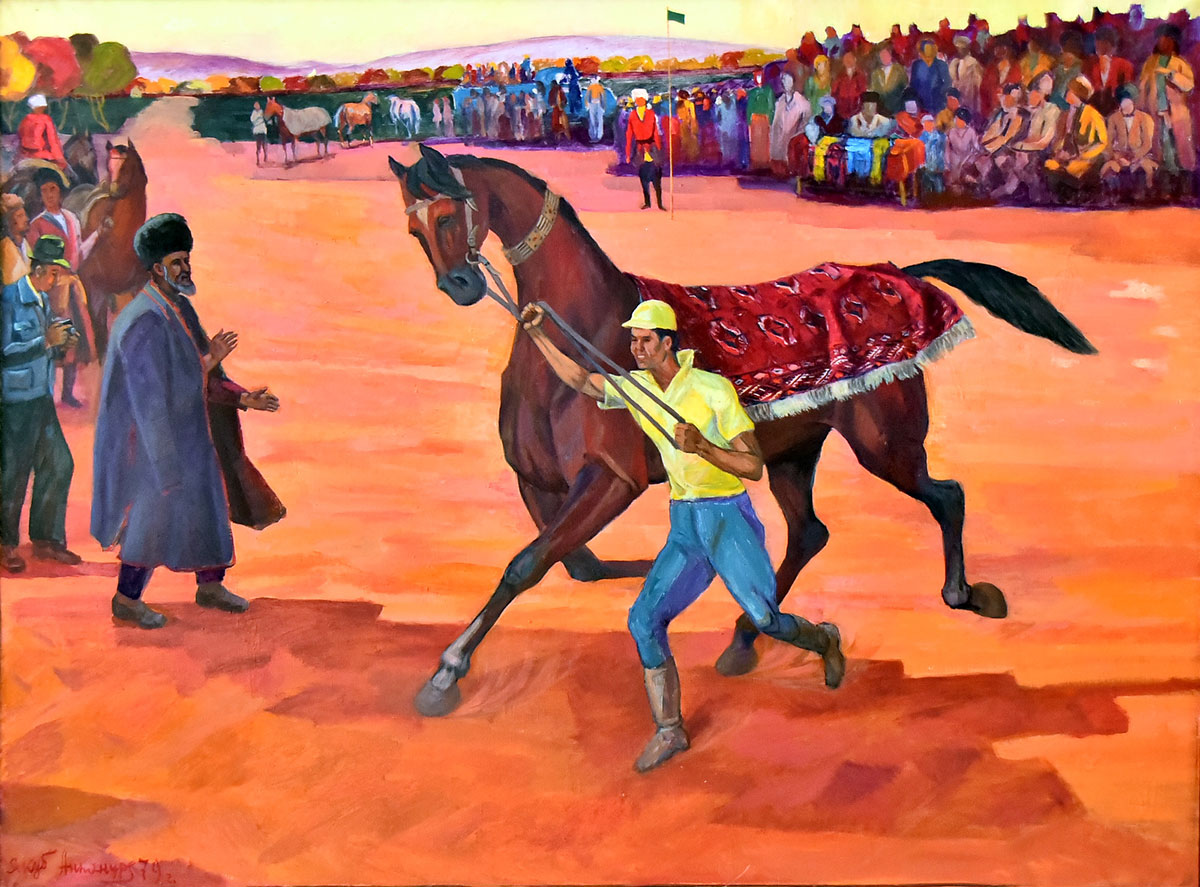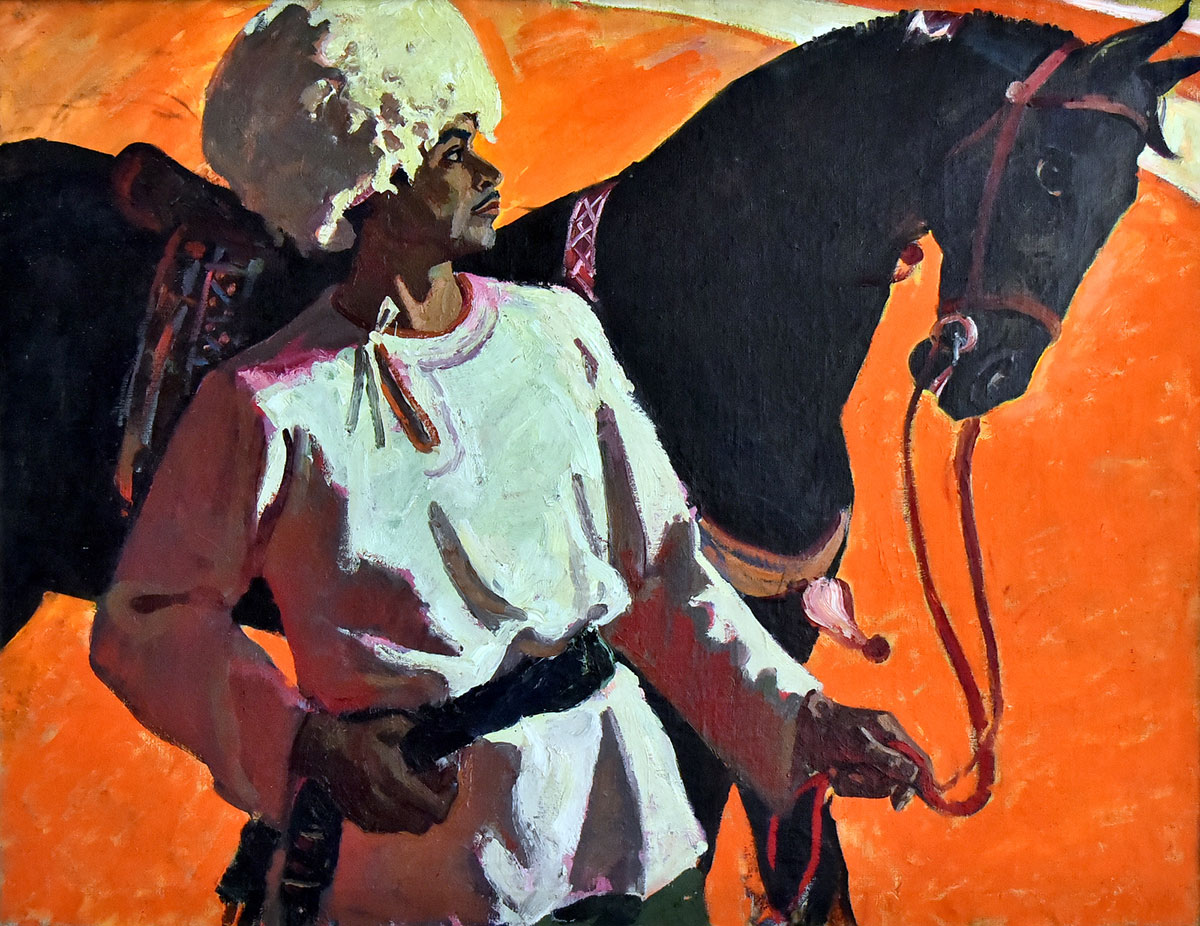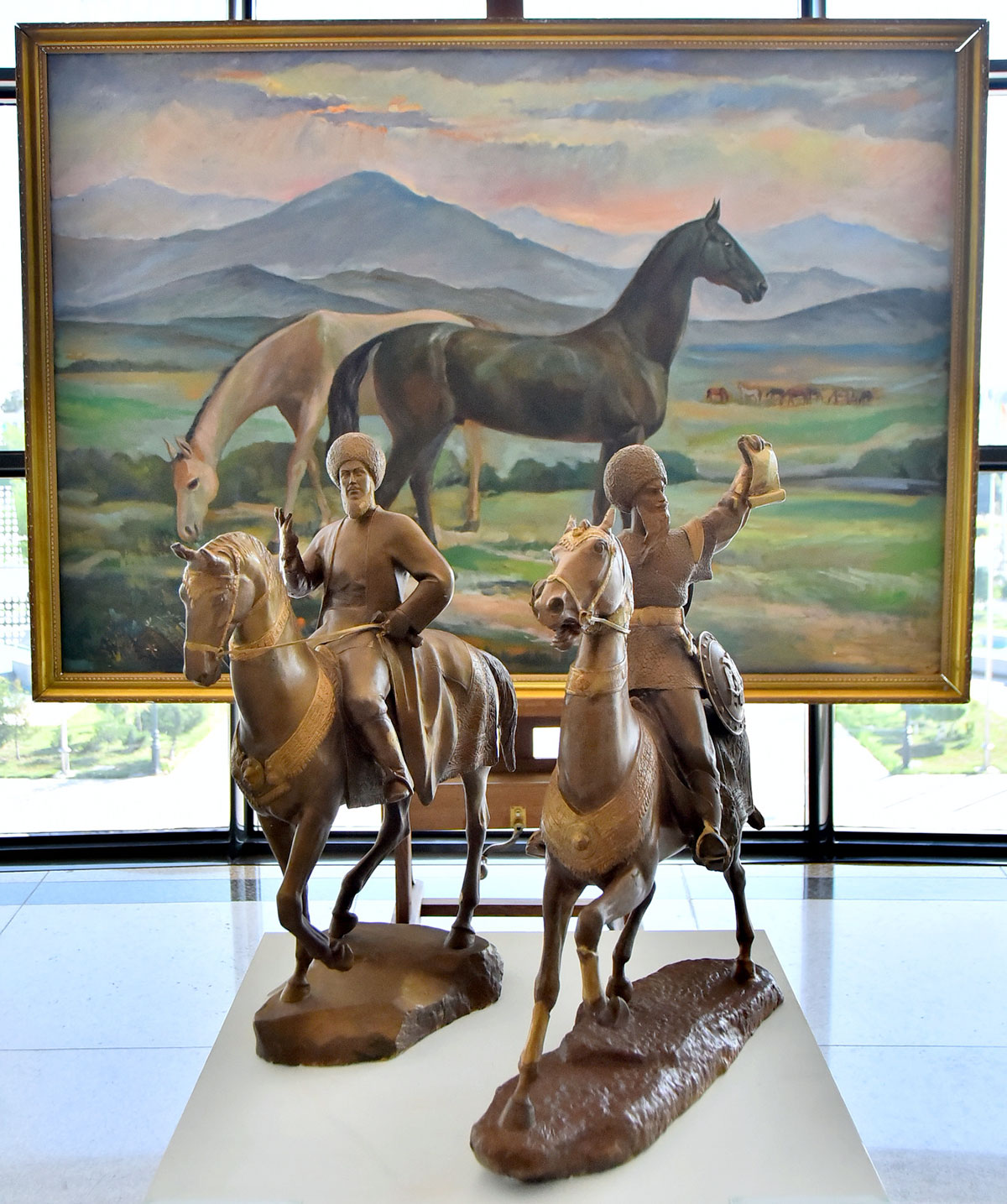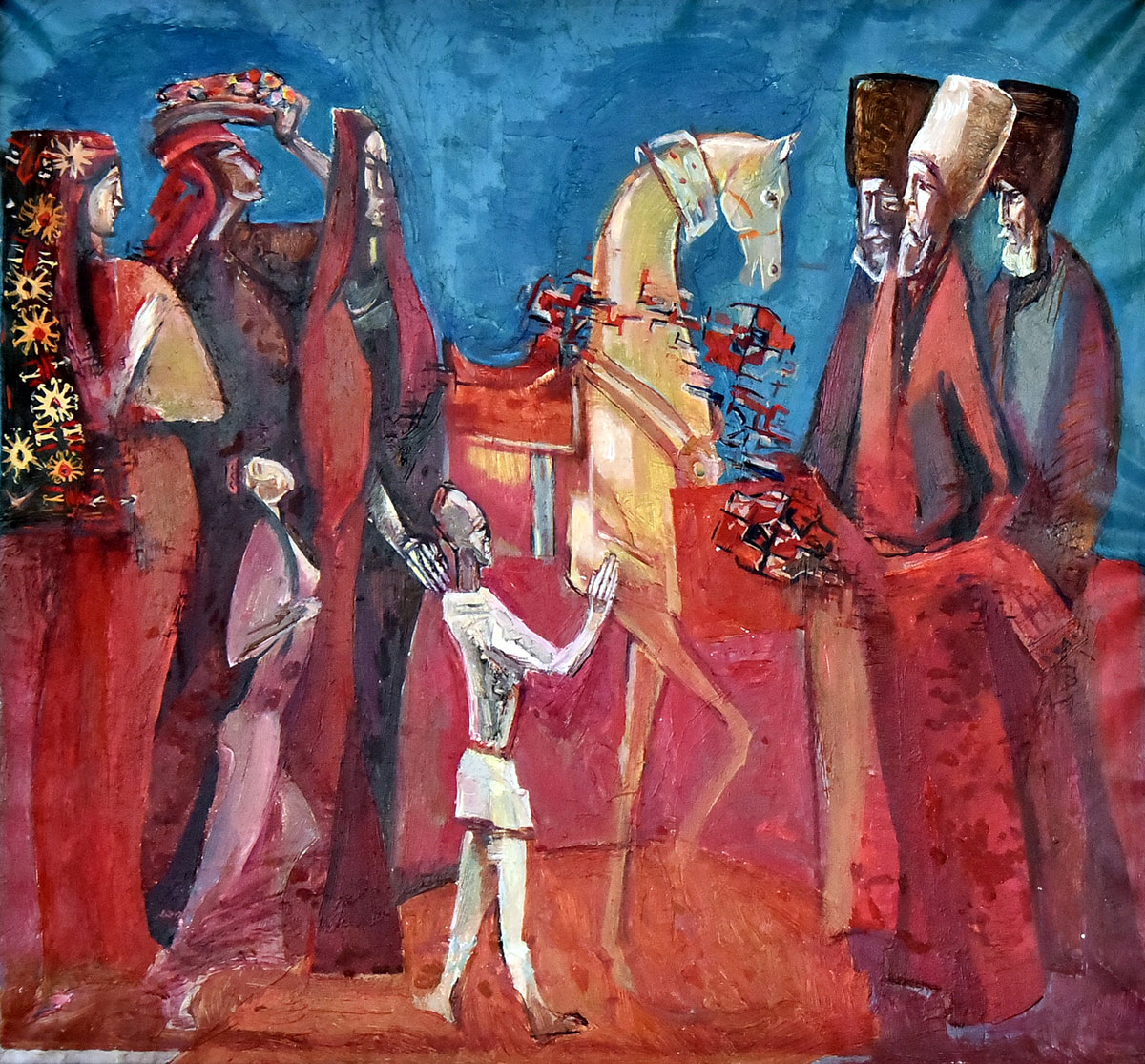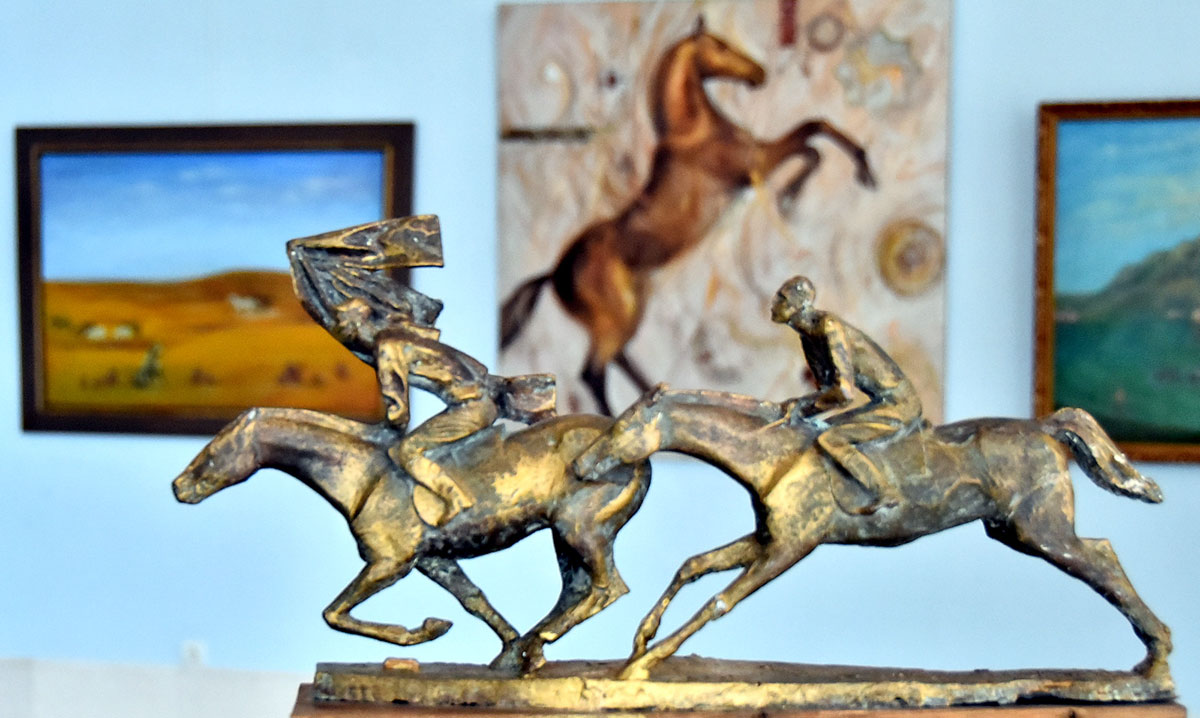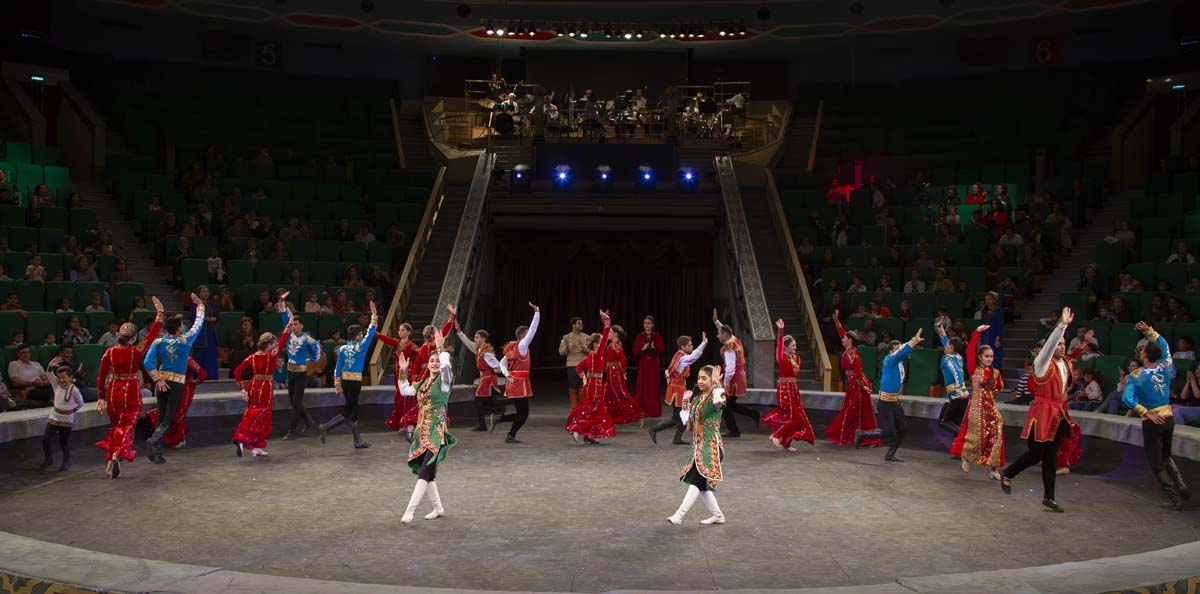The Akhalteke horse is seen as the metaphor of the spirit of freedom, ardor, strength and grace. ‘Heavenly’ horses with a noble posture and graceful movements can leave anyone gasping in admiration.
People’s Artist of Turkmenistan Yarly Bayramov’s painting ‘At the Foothills of the Kopetdag’ transports the viewer to a picturesque mountain valley with Akhalteke horses frisking about. The breathtaking beauty of Turkmen nature and Akhalteke horses with delicate and exquisite bodies reminiscent of finely crafted porcelain figurines are painted with the bright palette, which is very much Yarly Bayramov’s hallmark.
The above-mentioned painting has echoes with Valentin Kudryashov’s ‘Parthian Expanses’ featuring a bird’s eye view of the vast panorama of poetically scenic foothills nearby the Turkmen capital. It is a symbolic representation of history and the present: the site of ancient Nisa, the Health Footpath, and the high flagpole with the State Flag of Turkmenistan flying on top. Although the painting depicts no horses, it symbolically reflects the rapid pace of our times compared with the fast-moving Akhalteke horse.
Back in the past, no village festivity was complete without famous horse races and there was no need for a specially designed racetrack and spectators’ stands. Mamed Mamedov’s ‘Toi’ (Festivity) features a scene after a race with riders coming back to their village: some look upset, while others smile proudly. They are welcomed by their fellow villagers, some of whom have even climbed on the roof of their house to greet the winner. Regardless of who has won the race, the celebration is still well underway: four large steaming cauldrons fill the air with a mouth-watering aroma, and strong men are competing in goresh (national wrestling).
A painting by People’s Artist of Turkmenistan Chary Amangeldyev portrays a famous circus performer Dovletbay Khojabaev and his loyal equine friend. A red velvet arena provides a dramatic backdrop to a compelling narrative of the virtuoso equestrian and his magnificence horse, daring stunts on horseback and the trick riding master’s extraordinary talent.
Tamara Kiselyova’s painting is somewhat different. It shows a rider who leads the way holding his horse by the bridle. The artist added the positive energy of spring to the stroll of the rider and his four-legged companion that enjoy absolute mutual trust and understanding. The characters in the painting are young and have not become famous yet. With their popularity still ahead, they are now honing their skills training intensely.
The exhibition also showcases sculptures of two celebrated heroes astride horses: the legendary ruler Alp Arslan and the poet Mollanepes by People’s Artist of Turkmenistan Saragt Babaev. The horse of Mollanepes seems to walk slowing, allowing the author of the destan ‘Zohre and Tahir’ to recite poems. Alp Arslan’s horse looks restless ready to break into a gallop at any moment. The exhibition organizers decided to display these two separate small sculptures together demonstrating the versatility of the sculptor’s distinctive style and a wealth of meaningful details in works dedicated to Akhalteke horses.




